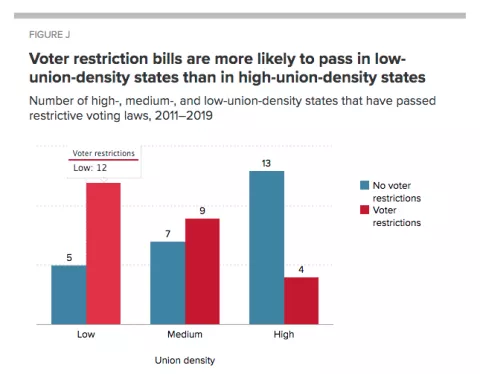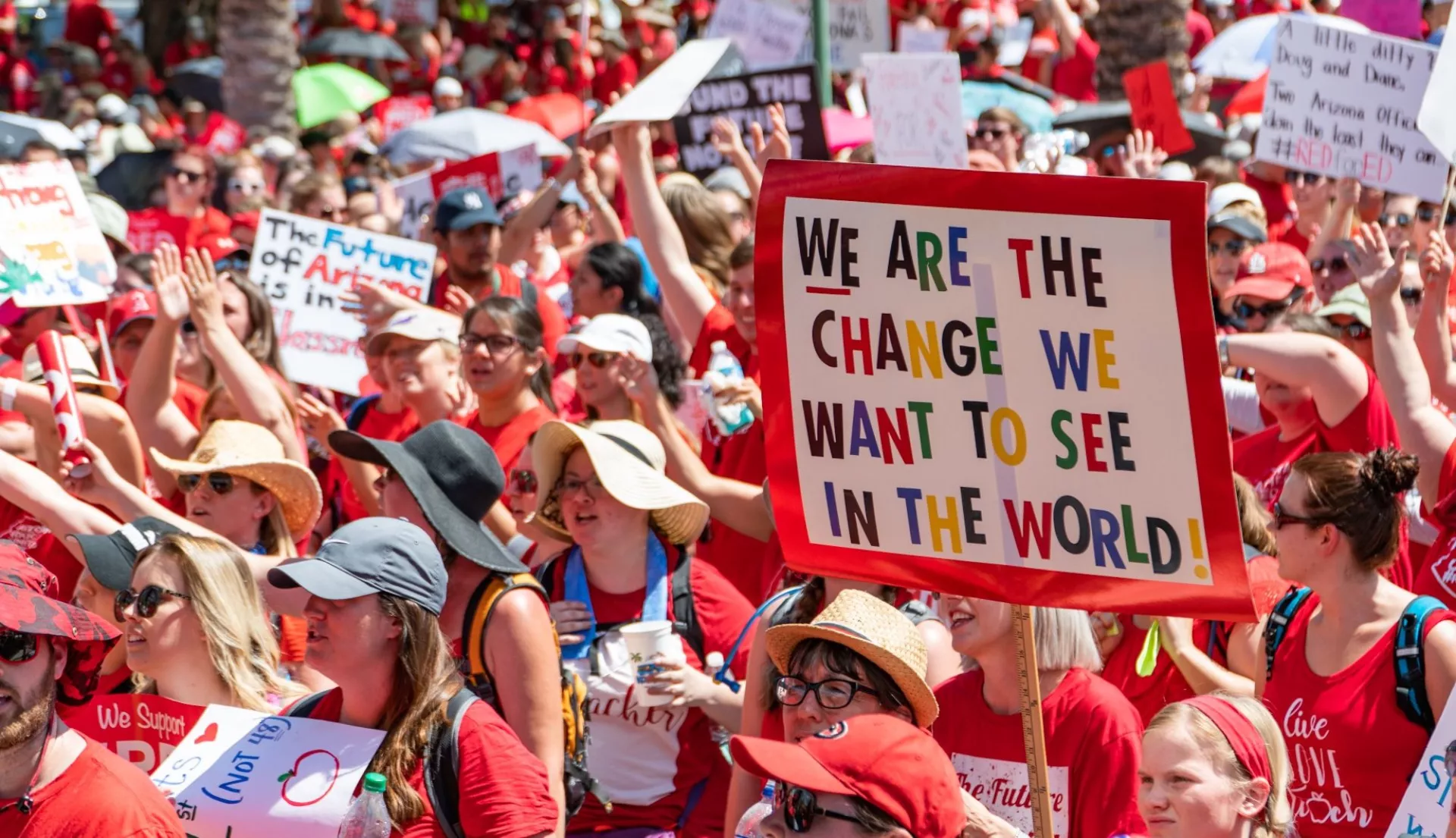Key Takeaways
- Collective bargaining rights strengthen public schools and entire communities, and protect our democracy.
- All public employees--nurses, social workers, childcare providers, sanitation workers, and many others--should have the guaranteed right to join a union and have a voice on the job.
- You can help NEA support the Public Service Freedom to Negotiate Act in Congress.
The pandemic has underscored the vital contributions of educators and other public employees who support our communities every day.
Again and again, we’ve seen these brave workers—including nurses, social workers, childcare providers, firefighters, emergency medical technicians, sanitation workers, and millions of educators—put themselves at risk to care for the most vulnerable among us.
School cafeteria workers made sure hungry families were fed when schools were closed, and bus drivers helped deliver meals and provide mobile internet access to communities in need. Teachers transformed their lessons overnight to keep kids learning virtually, and counselors knocked on doors to find students who had disappeared. Of course, we know that this dedication was never limited to the pandemic.
Collective bargaining strengthens the economy, helps working families get ahead, and lessens racial and socioeconomic inequality
Yet in many places, educators and other public employees don’t have a say in their working conditions and can’t weigh in on what they need to get the job done, despite their expertise and experience. A patchwork of widely varying state laws developed over the decades in different political climates.
In some states, public employees can bargain on a wide scope of issues. But those in other states are prohibited from bargaining at all, which hurts the employees and their communities.
For educators, collective bargaining rights mean they can negotiate fair pay and benefits, including health care, pensions, and paid leave, as well as improved working and learning conditions. During the pandemic, some locals bargained for more nurses, counselors, and literacy specialists to support students and make caseloads more manageable.
Here are just five of the major benefits of collective bargaining in public education:
#1: Better conditions for students and educators.
In negotiations, educators and their employers collaborate on student-centered issues such as setting limits on class size, identifying time for teachers and paraeducators to share effective classroom practices, addressing school health and safety issues, and ensuring teacher input into their own professional learning — all of which help students thrive.
#2: Educator-led answers to student needs.
Many locals have successfully bargained student-centered issues such as:
-
Lowering class size limits;
-
Adding more specialized instructional support personnel (SISP) to address student needs. These staff are also known as non-classroom educators and include social workers, occupational therapists, library media specialists, and many other positions;; and
-
Increasing the amount of recess time or arts curriculum offered to students;
-
Expanded alternative forms of discipline that do not target Black and Brown students..
#3 Retain the highest quality employees in the profession.
The Learning Policy Institute notes that five major elements that affect a teacher’s decision to enter and remain in the classroom, particularly under-resourced schools: compensation; teacher preparation; hiring and other personnel systems; mentoring and induction support for new teachers; and working conditions. Education support professionals, who are performing increased duties, frequently under hazardous conditions with little training, must earn a living wage.
Unions, working with school districts and harnessing their members' input, can positively impact many of these factors.
#4: Prioritize the safety and well-being of educators and students.
The pandemic is just the most recent example of how local educator unions fight for safe conditions for teaching and learning. By late summer and fall of 2020, local associations were focused on forging agreements to address the safe return to in-person learning, and terms and conditions for remote or hybrid instruction.
In spring and summer of 2021 and into 2022, negotiations continuedresumed over health and safety measures and the impact of reopening plans on educator jobs and workloads. In many places, school boards and local unions have negotiated multiple agreements to add nurses and counselors and prioritize social-emotional learning.
#5: Support the fight for social justice and racial equity.
In many communities, educators, parents, and community allies have come together with the realization that unless they unite to address systemic racism head on, we can never live up to our belief that every child deserves to succeed no matter where they live or how much money their families have.
Bargaining for the Common Good (BCG) is an approach to bargaining that engages the local community. For example, some NEA locals work with parents from the beginning of their contract campaigns to organize around a set of demands that benefit not just the bargaining unit, but also students and the broader community. BCG allows this coalition to go on offense and center racial justice within their demands, for example, by changing racist discipline policies and making advanced classes more accessible to students of color.
Collective bargaining for all public employees would strengthen communities
Stable, well-paying jobs always benefit the local economy, and in many towns across America, K-12 schools and higher education institutions are the largest employers.
Research by the Economic Policy Institute shows how collective bargaining strengthens the economy, helps working families get ahead, lessens racial and socioeconomic inequality, and even supports democracy.
Where union membership is stronger, restrictive voting lows are less likely to pass:

In other words, collective bargaining for public employees is good public policy.
Stemming the anti-union tide
Unfortunately, anti-union politicians and their backers have worked to erode those rights in recent decades. Some states have gutted their public sector collective bargaining laws, severely restricting bargaining rights for educators and other public employees.
In 2011, Wisconsin passed legislation that severely limited the scope of bargaining for public sector workers, including educators. Public employees are now prohibited from bargaining on any employment issue except base wages.
Many other states have followed Wisconsin’s lead, taking similar measures to either curtail or eliminate collective bargaining rights, including Arkansas, Florida, Idaho, Indiana, Iowa, and Michigan.
NEA’s state affiliates are working to reverse this trend in statehouses around the country, partnering with legislators already in office and helping to elect pro-union candidates.
Another solution is to pass a federal law that guarantees public employees the right to bargain collectively. The Public Service Freedom to Negotiate Act would ensure that public employees can:
-
join together in a union that they select;
-
bargain over wages, hours, and terms and conditions of employment;
-
have clear dispute resolution procedures; and
-
exercise other key rights that come with having a voice on the job.
Ask those who represent you in Congress to support the Public Service Freedom to Negotiate Act and tell leadership to bring it to the floor for a vote.


